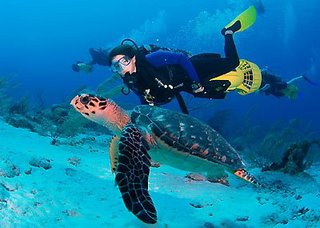
Deep Sea Coral
The term 'coral' evokes images of shallow sunlit reefs with a wide diversity of associated organisms, including an abundance of colorful fishes. Most people are aware of the role that coral reefs play in supporting the local economies of tourist destinations like the Florida Keys and the Hawaiian Islands. Further, most are aware of the dangers that increasing water temperatures, overfishing, and disease on the ecological health of reef ecosystems. However, most people, except fishermen and some scientists, are unaware that corals also occur in cold water and deep-sea regions around the earth.
Although the existence of deep-sea corals was first documented about two and a half centuries ago, most of what we know about them has come from exploration and research within the past few decades. With the development of simple underwater imaging technologies like camera sleds, and more complex vehicles like occupied submersibles and remotely operated vehicles, scientists have been able to begin the study of corals and associated organisms within their natural environments.
Ecology of Deep-Sea Coral
Like ancient forests, corals provide habitat for a diversity of other organisms. Unlike the terrestrial forests, however, little is known about their distribution, ecological role, and conservation status. In fact, recent evidence suggests that fishing has had substantial impacts on these communities in both the North Atlantic and Pacific Oceans. This combined with their slow growth rate and potential role as habitat for a number of commercially and ecologically important species could produce long lasting effects on deep-sea communities. We must understand the distribution, fundamental life history, repbroduction and ecological role of these organisms in order to manage and conserve these forests of the deep.
Coral Systematics
Imagine collecting a net full of fish and not being able to name them by species. How would it be possible to map their distribution, understand their ecological role, or understand if they are common or rare? One of the fundamental problems in working with deep-sea corals is identifying who all of the species are and how they are distributed. While some species are quite common across ocean basins, finding new species (or sub-species) and range extensions is not uncommon. There is much to learn about the how the diversity of coral species are distributed in the deep sea waters of the world.
Functional Role
What role do corals play in mediating the distribution and abundance of mobile organisms like crustaceans and fishes? Do corals enhance local patterns of biological diversity? Do corals provide sites for fish spawning? Do corals enhance feeding opportunities for fish by concentrating prey items like shrimp? Do corals provide shelter from predators? These questions and many others get at the issue of the functional role of corals in deep-sea ecosystems. Understanding the functional role of corals allows us to understand both the fundamental way in which these mysterious communities of organisms operate and how we might conserve and sustainably use these components of biological diversity.